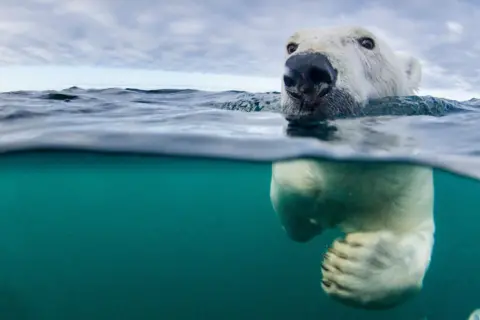Polar bears may have roamed ice age Scotland
 Getty Images
Getty ImagesResearchers believe they have found possible evidence that polar bears lived in Scotland during the last ice age.
Scientists previously suspected some of the remains found deep in Inchnadamph's ancient Bone Caves belonged to the animals.
Experts from National Museums Scotland and universities of Aberdeen and Edinburgh re-evaluated fossils collected from the area of limestone cliffs in Assynt.
They said their analysis of three samples suggested they belonged to bears from 30,000 to 50,000 years ago with diets made up almost entirely of seafood - just like today's polar bears.


The samples had previously been identified as brown bears.
Advancements in the chemical study of bones and teeth allowed researchers to re-examine the remains.
Bones of other animals now extinct in Scotland have also been recovered from the system of caves over the years - including lemming, wild horses, lynx and wolf.
Prof Kate Britton, from the University of Aberdeen, said: "We have identified several samples which stick out like a sore thumb both from the diets of other bears living in Scotland thousands of years ago and from what we'd expect of today's brown bears.
"Instead of consuming the meat of land-based animals, plants, or even a little salmon, like contemporary brown bears, these bears appear to have lived almost exclusively on seafood."
Prof Britton said it could mean the samples are of a subspecies of brown bear, but added it was also possible they were of polar bears.
The research has been published in scientific journal Annales Zoologici Fennici.
Dr Andrew Kitchener, of National Museums Scotland - where the bear fossils are held - said polar and brown bear habitats may have overlapped thousands of years ago as they do today.
He added: "It presents interesting questions about the ancestry of bears that later roamed our islands."
The team is now conducting DNA analysis of the samples with collaborators in Sweden to determine the species of the bears.
